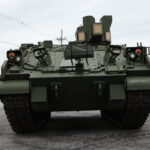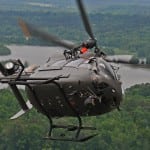
A lead Army missile defense official said last Friday the service is assessing how to bring down the operational tempo and global demand for its Patriot air defense batteries by “toggling up” new attack capabilities and contributions from allies and partners. “There is never going to be enough Patriot [capability] to meet all of the demands that are out there. There’s not going to be enough THAAD. I’ve told my team we can’t ‘Patriot’ our way out of this,” Lt.…

 By
By 











